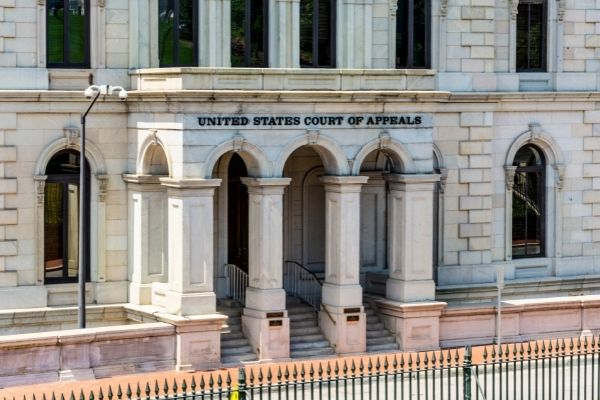Debunking the Process of Federal Appeals: What You Required to Know
Browsing the intricate realm of government appeals can usually seem like going across uncharted waters for those not familiar with the process. Comprehending the subtleties of appellate court territory, the complexities of submitting a notification of allure, presenting a compelling short, and making an influential oral disagreement are crucial parts that can significantly impact the result of an instance. By untangling the layers of complexity surrounding government charms, people can get a more clear understanding into the systems that control this critical stage of the legal system.
Understanding Federal Appeals Process
Looking into the complex world of the government charms procedure unveils a structured and systematic journey via the judicial system - wyoming federal appeal lawyers. Federal charms act as an essential device for reviewing choices made by lower courts. Recognizing this process is vital for any person involved in lawful process at the federal level
The procedure typically starts with a celebration dissatisfied with a reduced court's ruling submitting a notice of charm. This causes an evaluation by a greater court, where a panel of judges examines the legal disagreements provided by both parties. Briefs detailing the lawful reasoning behind each event's position are submitted, and oral disagreements may be heard to make clear complex problems.
The appellate court's decision is based upon a comprehensive assessment of the lower court's proceedings and the arguments offered. The judges do not reexamine realities however concentrate on whether legal errors happened that affected the reduced court's choice. When the appellate court gets to a decision, it can affirm, reverse, remand, or customize the lower court's judgment, offering clearness and finality to the legal dispute. Comprehending this procedure is essential for browsing the intricacies of government charms successfully.
Appellate Court Jurisdiction Described

Appellate courts have territory over particular sorts of situations, commonly those involving legal errors, step-by-step issues, or concerns of regulation as opposed to factual disagreements. The territory of appellate courts is typically outlined in laws and legislations that regulate the court system. Recognizing appellate court territory is critical for events involved in the allures procedure as it establishes whether an instance is eligible for review and the extent to which the appellate court can intervene in the lower court's choice.
Declaring a Notification of Allure
The initial action in commencing the government appeals process involves filing a Notification of Charm with the suitable appellate court. wisconsin federal appeal attorneys. This vital record officially alerts the court and the other celebrations entailed in the case that the appealing celebration means to look for a review of the lower court's decision. Submitting a Notification of Allure is a strict step-by-step demand that sets the appellate process moving
When preparing the Notice of Appeal, it is important to make sure compliance with the certain guidelines and standards of the appropriate appellate court. The record must usually include info such as the instance name, the reduced court's name, the date of the judgment being appealed, and a concise declaration showing the grounds for the allure.
Timeliness is important when submitting a Notification of Charm. Missing the target date for submitting this record can result in the charm being rejected, emphasizing the significance of accurate and timely initiation of the charms procedure. It is advisable to seek legal support to navigate the intricacies of submitting a Notice of Charm successfully.
Rundown and Oral Argument
In the appellate procedure, presenting written briefs and engaging in dental debates play pivotal functions in advocating for the appealing party's placement prior to the appellate court. Briefs are extensive lawful documents that detail the parties' disagreements, lawful authorities, and evaluation supporting their positions. These created entries offer the court with a comprehensive understanding of the facts of the case, the pertinent legislation, and why the appealing party believes the lower court's decision need to be overturned.
Complying with the entry and evaluation of the briefs, oral debates provide the parties a possibility to additional clarify their positions, resolve any type of questions the appellate courts may have, and emphasize crucial points from their created briefs. Oral debates are a possibility for the attorneys to convince the judges with verbal campaigning for and reactions to questions from the bench.

Receiving the Appellate Court Decision

Conclusion
Recognizing the appellate court jurisdiction, filing a notice of charm, preparing briefs, and offering dental arguments are all important elements of this procedure. Inevitably, receiving the appellate court decision can give clearness and resolution to legal conflicts.
As we progress from understanding the federal charms process to exploring the details of appellate court territory, a basic aspect comes to light regarding the authority and limits of these higher courts in the legal landscape. Appellate court jurisdiction refers to the range of situations that a specific appellate court has the power to evaluate and decide upon. Unlike trial courts that listen to instances for the initial time, appellate courts are restricted to evaluating choices made by reduced courts. Comprehending appellate court jurisdiction is essential for parties involved in the allures procedure as it figures out whether a situation is eligible for testimonial and the level to which the appellate court can intervene in the lower court's choice.
Whether the appellate court verifies, reverses, or remands the lower court's decision, recognizing the implications of the ruling is vital for all parties entailed in the appellate procedure.